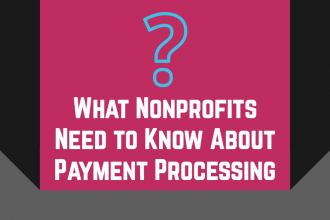The chargeback system was put in place decades ago to help protect consumers against theft and fraud. Although it’s been effective, there have been a lot of changes in how consumers use credit cards, especially due to online spending. As a result, the previous chargeback system just wasn’t flexible enough to handle how complex the contemporary payment industry has gotten. Additionally, many consumers began taking advantage of the chargeback system, since filing chargebacks was often more convenient than returning items bought online. To counteract the inefficiency of the previous system as well as fraudulent use, Visa has released a new platform called Visa Claims Resolution.
The new Visa Claims Resolution system helps to reduce the number of chargebacks as well as the time and cost of handling disputes. The following are six things that you should know about Visa Claims Resolution:
1. The reason codes have been consolidated
The chargeback reason codes were unnecessarily complicated in the previous system. Previously, there were 22 chargeback reason codes to choose from. These reason codes have been consolidated into four new dispute categories that include “Fraud,” “Authorization,” “Processing Errors,” and “Consumer Disputes.” These four categories contain between three to nine more specific codes each.
2. Reason codes are split into two workflows
In the previous system, merchants would be able to appeal upheld chargebacks, requiring the dispute to go into an arbitration process in which a final decision would be made. While the system was relatively effective, it wasn’t very efficient.
To streamline this process, Visa has implemented a liability-based initiative in which automation is used to eliminate cases that are obviously invalid. This helps to lower the number of complaints that go through to the litigation phase, making it easier to resolve the cases that do since fewer resources are being used up. To achieve this, Visa has divided its dispute process into the two following tracks:
- Allocation- The allocation track concerns fraud and authorization disputes. Data is collected in real time to prevent illegitimate or frivolous chargebacks from being submitted and allows funds to be settled within a 24 to 48-hour period.
- Collaboration- The collaboration track uses the same process as before in order to resolve all processing error disputes and consumer disputes.
3. The response period has been shortened
On average, it takes roughly 46 days to resolve a chargeback. Unfortunately, if the case is particularly complex, it can take upwards of three months. This is largely because banks have 45 days to respond to a Visa dispute. New regulations will shorten this time period to 30 days, which will help to bring about quicker resolutions.
4. VROL allows for less paperwork
Under the previous chargeback system, a significant amount of paperwork had to be collected and passed around from Visa to the acquiring bank and from the acquiring bank to the merchant. The Visa Resolve Online system (VROL) helps to reduce the need for paperwork because it’s able to collect, cross-reference and share transaction data. This allows all involved parties to receive the same data at the same time, thereby streamlining the process and reducing potential errors.
5. Real-time data can be transferred from merchants to issuers
The new Visa’s Merchant Purchase Inquiry (VMPI) plug-in for VROL allows credit card issuers to communicate with merchants directly so that they can exchange data in real time. Merchants who use VROL will be automatically supplying any transaction data that issuers require; however, VMPI allows merchants to send additional data, such as digital receipts and purchase information before the customer even raises a complaint.
Essentially, it allows credit card issuers to proactively get ahead of potential disputes, thereby allowing them to shut them down before they occur since banks will be able to see any existing transactional evidence that would be used in representment to identify fraud or talk customers through complaints, thereby bypassing the whole representment process.
6. Visa Claims Resolution adoption is mandatory
As of April 13, 2018, all merchants, issuers and acquirers who handle Visa transactions will be required to adopt the new Visa Claims Resolution platform, whether those transactions are card-present or card-not-present.
Visa Claims Resolution presents a number of changes to the chargeback system that will benefit both merchants and customers. The new system will reduce the timeframes for dispute resolutions, simply the dispute process, automatically block invalid disputes and reduce the number of chargebacks overall.




